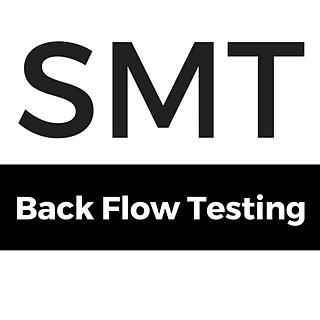Winter is here: Is your Backflow Device Protected from the cold?
- Steve Tamkee
- Feb 5, 2025
- 3 min read

One question we get asked a lot here at SMT Backflow Testing is whether or not your backflow device needs to be winterized. While our winters here in the Lower Mainland are generally not as cold as you’d get if you venture into the Okanagan or more Northern climates, they do work with water, and water freezes. Therefore, winterizing your backflow device is a crucial step to ensure that it continues to operate as needed when the weather warms up.
So far this year, Lower Mainland temperatures have been crisp, but not too frigid. This is good for being out and about in the winter months, but can also present a challenge for your backflow devices. Unexpected cold snaps do happen in coastal climates and can be particularly hard on your irrigation systems, especially if you haven’t yet tucked them in for the winter.
What happens when a backflow device freezes?
A backflow device acts as a barrier, blocking the water from flowing backward through the irrigation system. This keeps the water supply safe from contaminants that could be detrimental to the health and safety of the drinking supply. But, by nature of being a barrier for water, the backflow device is susceptible to damage when exposed to colder temperatures.
You see, water expands when it freezes. And when it does so within the backflow device, it can freeze the internal components or damage the device itself. In either case, you might not automatically be aware that the backflow device on your irrigation system is damaged (other times, it can be quite obvious!), which can lead to challenges later on when it’s time to set up your irrigation system for the spring and summer season.
However, as backflow testing is only required on an annual basis, unless the damage to your backflow device is obvious there is a chance that you won’t know there is a problem until your next recertification, which can be costly.
How to winterize your backflow assembly
As part of the process of winterizing the irrigation system for your home or commercial building, you will want to also ensure that your backflow device is properly insulated and any irrigation components are well covered.
Winterizing your irrigation system means pumping air through the pipes to blow the water out of the network. This process will ensure that there is no water left in the pipes to cause damage to the irrigation system.
For your backflow device, you will need to turn off the isolation valve, ensure there is no water remaining in the line, and insulate the backflow preventer by adding styrofoam to the box in which it is sheltered.
If you’ve gone ahead a winterized the test valve yourself, be sure to open the test valve to let any standing water evaporate, or provide an escape route for any water that remains in the line. And of course, don’t forget to set a reminder that your test valve is open. You’ll be off to a wet start to the spring season if you forget!
Now, while the process of winterizing your backflow preventer sounds quite simple, we don’t recommend taking on the task unless you understand the specific components and requirements of properly winterizing your system.
The best course of action is to have your irrigation system winterized by a professional irrigation technician. This will ensure that your system is properly flushed and protected for the winter months.
If you need assistance with finding a reliable technician, do not hesitate to reach out. I can put you in touch with irrigation specialists.



Comments